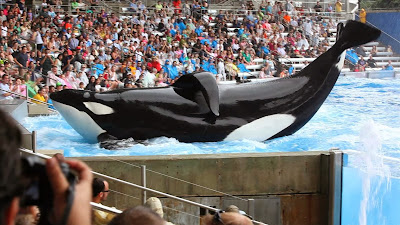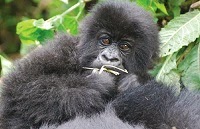The movie opens with 911 distress calls about killer whale attacks on their trainers.
We then go back to the 1970s, when killer whales (also called “Orcas”) were captured for display purposes. Baby orcas were specifically targeted. It is heart-breaking to see the families not leaving the captured ones behind, even when they had the option to do so.
When SeaWorld was legally told to stay away from Washington, they immediately moved to Iceland to procure more orcas.
Now comes the focus of the movie, a male killer whale called “Tilikum”. Captured in 1983, he showed extraordinary physical growth right from a young age.
Tilikum was initially placed at Sealand of the Pacific, where he was paired with a trained killer whale. Based on Tilikum's performance, both were offered food (as positive reinforcement) or denied food as punishment.
Tilikum's mistakes made him the unfortunate victim of physical attacks by other orcas. On top of that, the orcas were put in a small enclosure that limited their mobility. All these incidents are suggested to have caused a growing psychosis in Tilikum.
This would soon manifest in 1991, when Tilikum claim his first victim, Keltie Byrne. He would go on to claim two more victims: Daniel P. Dukes (with his private parts bitten off) and a trainer, Dawn Brancheau.
But Tilikum is the only killer whale to go rogue in the documentary. Kasatka initiates an assault on his trainer, Ken Peters that goes on for a few minutes and is gripping to watch. To watch a human at the complete mercy of a huge animal underwater is frightening.
The director, Gabriela Cowperthwaite has done a tremendous job. Kudos to her for presenting an objective view of the dangers inherent in holding such powerful and intelligent living beings in captivity. Even worse is subjecting such life forms to perform actions and tricks, that they would never do in the wild.
Along with the director, the other stars of the documentary are the ex-SeaWorld trainers who honestly express their concerns about the hazards and reality of holding killer whales in captivity. The initial parts of the documentary has some scenes, where the trainers discuss their fascination with killer whales and how they were inspired to work for SeaWorld.
It is tough to accept one's lapse in judgment and full credit to these real life heroes for their profound contributions.
Orcas have very advanced brains and are very social beings. They are capable of communicating with each other using sounds and language. It has been documented that each pod of whales have their own set of signs and communication signals.
Orcas live as long as humans do (unlike how some of the SeaWorld employees in the documentary would have us believe).
Orcas have very advanced brains and are very social beings. They are capable of communicating with each other using sounds and language. It has been documented that each pod of whales have their own set of signs and communication signals.
Orcas live as long as humans do (unlike how some of the SeaWorld employees in the documentary would have us believe).
Again,
it is interesting to note that there has not been a single
human casualty due to killer whale attack in the wild. All the casualties have occurred in the marine theme parks.
The movie raises some hard hitting questions:
The movie raises some hard hitting questions:
1. Is it ethical to subject such intelligent and caring living forms to a captive life in a relatively small enclosure for their entire lives? Who is responsible for causing the killer whales to attack (and sometimes kill) their trainers? Is it the orcas themselves or the marine mammal parks or the people who encourage this industry by buying tickets to such shows?
2. Is it a wise move to use Tilikum's genetic material to create new babies, given his track record of aggression towards his human handlers? Does not that tantamount to taking unnecessary risks of having such incidents recur?
3. Was it ethical in the first place to take away baby orcas from their families to live their entire lives in captivity? Even now, baby orcas are taken away from their mothers, to be transported to other branches of SeaWorld. The decisions are made based on monetary considerations, without any regard for the emotional well being of the whales themselves.
4. Further, does it make any sense to let children watch other equally (if not more) intelligent living beings behave in an unnatural way. For example, killer whales are trained to “wave” to the audience using their fin. This is something that the whales never do in the wild. Is that way we want the young children to take away from such shows?
Unfortunately, Tilikum and other orcas are still held captive. Let us hope that this movie will help create the necessary public awareness and consensus to have these killer whales released to the wild.
Gabriela Cowperthwaite and her crew have delivered a one of a kind experience that will change your perception of Orcas/Killer Whales and marine theme parks forever.
Click here to read all my posts about Nature.
If you enjoyed this post, please subscribe to this blog by clicking here.
Image Sources: CNN Films, Cable News Network (CNN), Magnolia Pictures, Manny O Productions













